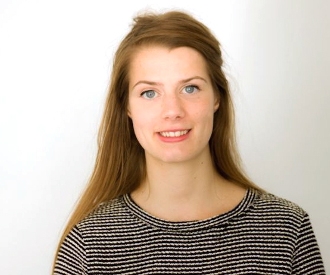
Introducing Didi van Trijp
Didi van Trijp started her PhD project at LUCAS in October 2015. Her PhD project is part of A New History of Fishes. A long-term approach to fishes in science and culture, 1550-1880, a project directed by prof. dr. Paul Smith.

Didi van Trijp majored in History at Utrecht University. During her years as an undergraduate she participated in a university-wide honors program, which fostered her curiosity in the interaction between different academic disciplines; an interest pursued further as a visiting student at the University of California, Berkeley. Upon obtaining her bachelor degree, she enrolled in Utrecht University’s research master program ‘History and Philosophy of Science’. As part of her study she spent some months at the Max Planck Institute for the History of Science in Berlin, an institute that approaches scientific thinking from a variety of methodological and interdisciplinary perspectives.
What is your research about?
‘My project is part of the broader, NWO-funded project directed by prof. dr. Paul Smith titled
A New History of Fishes. A long-term approach to fishes in science and culture, 1550-1880.
This is a project in which historians of science, historians of art and biologists work together and is consequently rather interdisciplinary in its scope.
What I am researching is the development of ichthyology as a scientific discipline between the late seventeenth and early nineteenth century, a period that corresponds with what is generally considered the Enlightenment. The main corpus of primary sources consists of the various ‘fish books’ that were written in this period by eminent naturalists such as Willughby, Ray, Linnaeus, Bloch, Buffon and Cuvier. Even though they drew upon one another’s work, their opinions on how to best represent living nature could widely differ. Some of their illustrations were real works of art; Bloch’s depiction of a gold fish, for example, is heightened with gold to imitate the metallic sheen of scales. This can lead to intriguing reflections on the relationship between art and science.
Books on natural history, however, are only one part of the story. My project’s text-directed path is coupled with a more context-based approach, which means that I’m looking at how descriptions were contextually informed. The seventeenth and eighteenth centuries saw, for example, a growing interest in maritime exotica as well as an increasing importance of collections (such as cabinets of curiosities). Furthermore, this was a time in which many scientific institutions were founded, such as the Royal Society in London or the Académie Royale des Sciences in Paris. This had consequences for approaches towards natural knowledge in general, and for the study of ichthyology in particular.’
How does it connect to the present?
‘Recently, there has been a lot to do in the news about fish conservation and preservation, such as how the depletion of the oceans and subsequent losses of (marine) biodiversity may be averted. Biologists and ecologist may be helped by being offered a long-term view of these issues. We are currently constructing a database for our project, in which we will collect all kinds of information on fish (e.g. size, habitat), abstracted from the books we study. This could also open up avenues for reflection for ecologists.’
